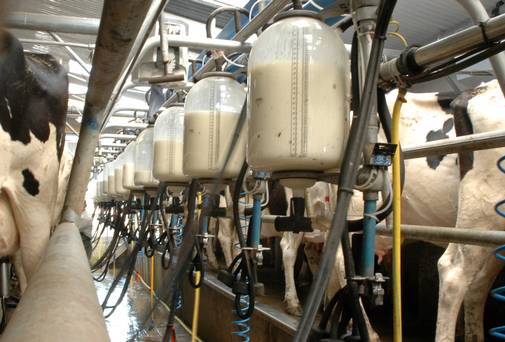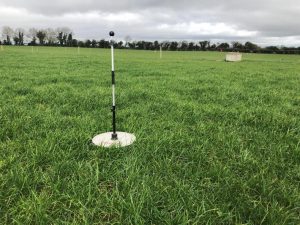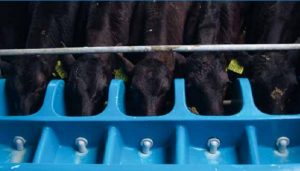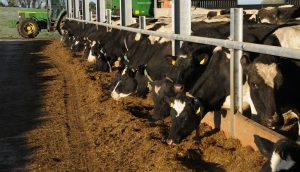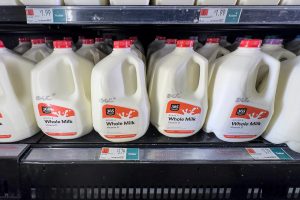
Price volatility is a spectre that haunts every dairy farmer in particular. It was not always so. During the 30 years from 1977 to 2007 milk prices were extraordinarily stable, apart from regular seasonal variations.
In a few fateful months in mid-2007 this changed.
The milk price exploded, rising from 25.6c per kg in March 2007 to reach 45.40c in November that year (reflecting a similar but not so extreme volatility in the rest of the EU).
As Newton’s third law tells us, for every action there is a reaction, and the reaction was not long in coming. From the high point of 45.40c in November 2007, the price dropped on an almost monthly basis to hit a low of 21.8c in June 2009.
It then recovered, to hit a new peak of 38.6c in October 2011, falling back the following year before hitting 44.9c in November 2013.
Shortly afterwards, milk prices again collapsed from the second half of 2014 through 2015 to fall to 20.0c in July 2016. Monthly prices have recovered since then but still fluctuate a lot.
Producer prices are not the only source of volatility. Changes in input prices can offset some of the fluctuations in milk prices (as when fuel and fertiliser prices rose along with milk prices in 2007) but on other occasions they may exacerbate these fluctuations. Dairy margins can be even more unstable than milk prices alone.
The experience of the last decade suggests that milk prices increasingly follow a model, where high prices lead to optimistic expectations among producers. The resulting increase in production then leads to a crash until production is cut sufficiently so that prices start rising again.
For a farmer who has invested at the wrong point in the cycle, the financial consequences can be disastrous. It is not surprising that, in a survey carried out by Teagasc in 2011, market risk (output and input price volatility) was perceived as the main source of risk in Irish dairy farming.
A study for the Dairy Research Trust last year explored some of the options available to dairy farmers to manage this risk.
It highlighted the importance of direct payments as an income stabilisation tool.
It also investigated the role of forward contracts (just under 40pc of specialist dairy farmers used forward contracts in 2016) and the income averaging scheme for tax purposes (which it found to have limited relevance and impact).
In its amendments to the Commission’s legal proposals for the CAP post 2020, the report adopted by COMAGRI in the European Parliament just before the elections calls for additional tools to prevent and
manage market crises.
While the proposed tools would be available to all commodities, the suggestions are clearly aimed at the milk sector and build on proposals put forward by the European Milk Board now for a number of years.
COMAGRI is proposing a three-legged approach.
On market transparency, the Milk Market Observatory would continue, but it would be given the power to initiate an early warning mechanism for market disturbances.
Alert thresholds would be established where the Observatory would notify the Council of Ministers and Parliament if the EU weighted milk price fell below or above a specified percentage of milk prices in a previous period. The Commission would be obliged to present a report within a month on the market situation indicating what stabilising measures it proposed to take or give reasons for not introducing such measures.
Two further stabilising measures would be added to the Commission’s portfolio.
Volume reduction
One would be a voluntary Volume Reduction Scheme modelled on the Milk Production Reduction Scheme introduced in 2016. Farmers who reduced production below the comparable period in the previous year would receive compensation for so doing.
If, in spite of adopting measures to stabilise the market a severe market disturbance continues, the COMAGRI amendments would give the Commission the power to impose a levy on all producers in a sector who increase deliveries in comparison to the same period of the previous year.
The intent of the COMAGRI amendments is to break the production cycle through pre-emptive action, rather than dealing with the consequences of over-production afterwards through intervention storage or crisis payments to producers. It is an attractive idea even if there would be significant technical challenges to its successful implementation.
Where EU producer prices are largely determined by trends in world market prices, the ability of supply management measures in the EU alone to lift producer prices will be limited. Even in the case of dairy product markets, where the EU is a significant player, its relative importance is shrinking.
Also, dairy production in the EU is highly dynamic, with high numbers of expanding and contracting producers operating side by side. There is a danger that a voluntary compensation scheme will simply reward those producers who were intending to reduce production anyway, while a mandatory levy on expanding producers during a period when milk prices are already low could cause additional financial stress.
The COMAGRI proposal will likely be resurrected when the new Parliament starts business in July and would have to get the agreement of a majority in the Council of Ministers to become law. Given that price volatility seems here to stay it is important that all players in the industry give the merits and drawbacks of the proposal full consideration.
Alan Matthews is Professor Emeritus of European Agricultural Policy at Trinity College Dublin.
